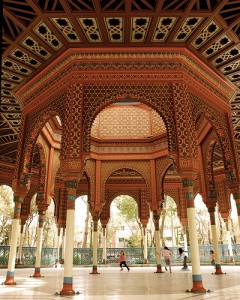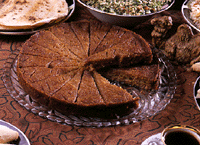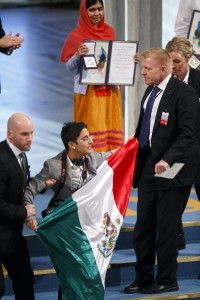Growing up in Mexico City, one of my first interactions with Arabs and Muslims was through the Lebanese community in Mexico. Although Mexico is a largely multicultural country and its cuisine has been largely recognized as a mix of different cultures, the dominant identity discourse these days is the mix between Indigenous peoples and the Spanish colonizers (mestizaje).

The term mestizaje has constantly been challenged for a number of reasons including the fact that it selectively highlights some identities (i.e. Aztec and Spanish) over others. In addition, much of the rhetoric around identity in Mexico also overlooks the great influence that other immigrant populations brought along (i.e. African communities, Chinese immigrants, and Palestinian refugees, to mention a few).
Although the Arab population in Mexico is largely composed of Lebanese, Syrians and Palestinians, the Lebanese immigrant community of the early 20th century is, until this day, the most influential. Some of the only Arab places to eat in Mexico City are Lebanese restaurants run by second or third generation Lebanese or Mexican-Lebanese families (interracial marriages and their offspring). One of the most common names attached to this community is Carlos Slim, Mexico’s richest man and one of the richest of the world.
Although Mexico is constantly identified as a Catholic country many other denominations and religious groups have flourished, among them Islam. The National Institute of Statistics and Geography reports that even though Islam is the fastest religion globally, it is still a minority in the country. The Institute’s statistics indicate that in 2000, there were only 1500 Muslims in Mexico, and most of them resided in Mexico City. This number has increased, and in 2010 it was reported that there were 3,760 Muslims, of which the majority are men. Yet, in Mexico City it is quite uncommon to see or even hear about Muslims. Perhaps the time when Islam became prominent in the Mexican media was after 9/11. Nonetheless, there is a small Sufi community and a small Salafi community in Mexico City. Although in Mexico it may be a common assumption that Arabs equal Muslims and vice versa, it has also been recorded that many Arabs in Mexico are Christians and some indigenous populations have been reported to practice Islam, especially in the southern state of Chiapas.

My favorite Lebanese restaurant in Mexico City was located right in downtown. The restaurant, which does not exist anymore, was located in an older building and had balconies that looked down right into a pedestrian street. My dad used to bring me here to celebrate special occasions, and I soon started to associate this place with people of what, back then, I considered the Middle East. One of the things I remember the most was the coffee. There was only one man, and older gentleman, that could prepare it. No other employee was allowed to touch the coffee. The older man would “bake” the coffee until it was ready to be called “Arabic coffee.” While my dad really enjoyed this, my favorite dish was their famous kibbeh charola. While many of us are familiar with the term “kibbeh,” this Mexican variation refers to a flat “kibbeh.” “Charola” literally means “tray,” and it refers to the circular shape of the flat meat dish. During Ramadan this would be the restaurant’s special… although I doubt most people would know what Ramadan was…
I hope that you enjoy this recipe as much as I do!
Kibbeh Charola
Ingredients:
500 gr. Extra lean ground beef or lamb
1 cup of corn semolina
Half an onion diced
Salt (according to taste)
2 table spoons of olive oil
1/3 cup of pine nuts
2 table spoons of pomegranate molasses (if you don’t find them just use one spoon of regular molasses and one spoon of pomegranate juice)
½ cup of fresh mint
Black pepper to season
Directions:
1- Mix the meat with the salt and the pepper. Divide the meat in two balls.
2- Fry the onion in the olive oil and add the molasses.
3- Take one of the balls of meat and add the semolina and the pine nuts.
4- Fry the meat mixed with the pine nuts, along with the onion and the molasses, until golden. This is your filling.
5- Prepare a round baking pan and make a thin layer with part of the second half of the meat (you will use the rest to cover the filling).
6- Put the filling on top of the first layer of meat. Make sure it is well distributed.
7- Cover the filling with the rest of the second ball of meat.
8- Sprinkle a bit of pepper at the top.
9- Pre-heat your oven to 375 F (180 C).
10- Bake the kibbeh for 40 minutes or until well cooked.
11- Sprinkle with fresh mint and serve warm.
Edited to Add: For more on Ramadan, and to read the rest of the posts in MMW’s Ramadan 2012 series, click here.












